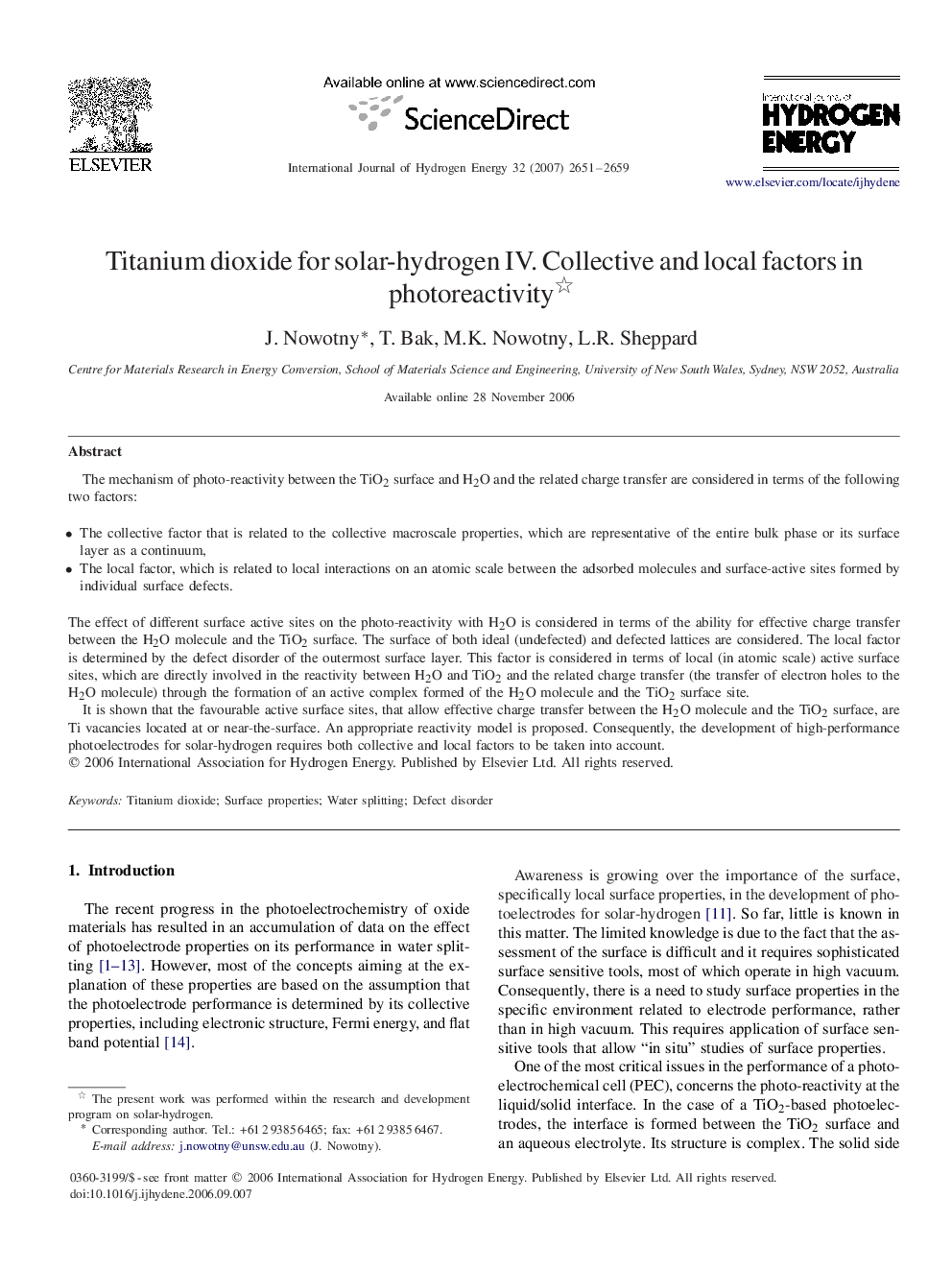| Article ID | Journal | Published Year | Pages | File Type |
|---|---|---|---|---|
| 1280162 | International Journal of Hydrogen Energy | 2007 | 9 Pages |
The mechanism of photo-reactivity between the TiO2 surface and H2O and the related charge transfer are considered in terms of the following two factors:•The collective factor that is related to the collective macroscale properties, which are representative of the entire bulk phase or its surface layer as a continuum,•The local factor, which is related to local interactions on an atomic scale between the adsorbed molecules and surface-active sites formed by individual surface defects.The effect of different surface active sites on the photo-reactivity with H2O is considered in terms of the ability for effective charge transfer between the H2O molecule and the TiO2 surface. The surface of both ideal (undefected) and defected lattices are considered. The local factor is determined by the defect disorder of the outermost surface layer. This factor is considered in terms of local (in atomic scale) active surface sites, which are directly involved in the reactivity between H2O and TiO2 and the related charge transfer (the transfer of electron holes to the H2O molecule) through the formation of an active complex formed of the H2O molecule and the TiO2 surface site.It is shown that the favourable active surface sites, that allow effective charge transfer between the H2O molecule and the TiO2 surface, are Ti vacancies located at or near-the-surface. An appropriate reactivity model is proposed. Consequently, the development of high-performance photoelectrodes for solar-hydrogen requires both collective and local factors to be taken into account.
